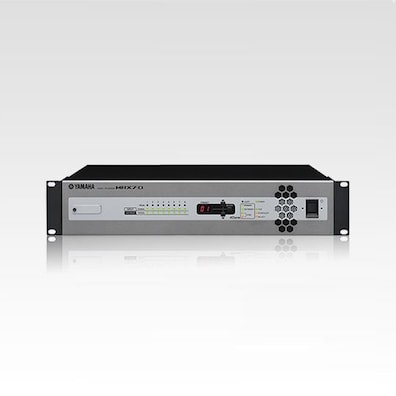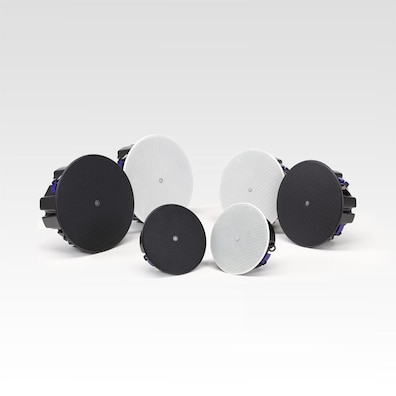Remote conferencing systems are essential for the new normal conference rooms

Founded in 2001, the Japan Association of Corporate Directors is the only organization in Japan that brings together company executives, independent directors, and institutional investors and the like for the purpose of growing Japanese companies. Yamaha’s one-stop sound solution for teleconferencing, ADECIA, was introduced at the Japan Association of Corporate Directors. To explore their reasoning behind adopting ADECIA, and to learn about its usability, we talked to Shigeru Matsumoto, Managing Director of the Japan Association of Corporate Directors, and Kentaro Takeyama, Sales Division, who is in charge of video and audio system design and installation.
Introduction of ADECIA for the purpose of responding to the COVID-19 pandemic and communicating with the members nationwide.
Would you first briefly give us an overview of the Japan Association of Corporate Directors?
Mr. Matsumoto: The Japan Association of Corporate Directors was established in November 2001. It is focused on company executives of listed companies. Since its establishment, this association has worked further to grow Japanese companies with the aim of popularizing corporate governance and enlightening company executives of that. Today, the association comprises approximately 200 members companies, and approximately 400 to 500 individual members, including independent directors, professional services, lawyers, and accountants, and the like, who are responsible for corporate governance. One of the features of the association is to discuss issues relating to how we can ensure that Japanese companies lead the world economy, and actually to transition those issues into action.
Shigeru Matsumoto, Managing Director, Japan Association of Corporate Directors
Would you kindly describe how you came to adopt the remote conferencing system ADECIA?
Mr. Matsumoto: We had three reasons. The first reason was the worldwide Covid-19 pandemic. In order to maintain social distancing, we couldn’t gather together in one place. Also, we have noted a rapid increase in the use of web conferencing under the unexpected circumstances in which not all the members could even come to participate in the seminar.
Another was a problem that we had been dealing with from before the Covid-19. Although the association is located in Minato-ku, Tokyo, our membership has continued to expand nationwide as our organization has grown and our association has taken on many more activities. We have been faced with the problem of what to do with regional members. Coming all the way to Tokyo places an extremely heavy burden on members who reside outside of the Kanto area, in terms of distance and the time it takes to get here. For that reason, we traveled to regional areas to conduct seminars and study groups, but we also felt limitations. We soon realized that conducting web conferences would solve that problem.
Lastly, the World Trade Center Building, where the association was located, was scheduled to be demolished, then we had to relocate our office. We used this as an opportunity to prepare a conference room where we could conduct remote meetings over the Internet. We selected the model we wanted while consulting with the experts at Kowa Co., Ltd. Thanks to that, we settled on adopting ADECIA from Yamaha.
Introduction of ADECIA that uses the signal processor "MRX7-D" as its core to support remote conferencing, indoor microphone amplification, and PC voice amplification, and the like
We spoke with Mr. Takeyama from Kowa Co. Ltd., who was responsible for designing and installing the remote conferencing system. When you were designing the actual system, what kinds of things were you careful to pay close attention to?
Mr. Takeyama: I inspected the conference room before the relocation and made some suggestions after hearing some of the things with which they were dissatisfied regarding their current situation and equipment, and listened to what they wanted to do in the future. With regard to acoustics, they wanted to be able to conduct smooth web conferences. If possible, they wanted to keep everything off from the top of the table. I thought that the RM-CG would be perfect for this project because it is installed in the ceiling. It also includes a multi-beam tracking feature that automatically tracks the speaker. The size of the conference room was just enough for two RM-CG units to cover. After confirming the actual equipment at the Yamaha Music Japan office, I proposed that they adopt ADECIA.
Mr. Kentaro Takeyama, Sales Division, Kowa Co., Ltd.
Boardroom Where ADECIA is Installed
Two Ceiling Array Microphones RM-CG Installed in the Front and Rear of the Boardroom Ceiling
Can you explain your reasoning for using the signal processor “MRX7-D” for this system?
Mr. Takeyama: They were not only requesting a remote conferencing system, but also the amplification of a hand-held microphone during regular meetings and seminars, and the amplification of various input sources including the audio of the computer used during a presentation and the audio of Blu-ray. Because of those specific requests, I selected to adopt the signal processor "MRX7-D" because it is a flexible system configured to support such applications. Particularly when amplifying using a hand-held microphone during a web conference, it is almost impossible to completely eliminate some echoing and howling, so the functionality of the echo canceler and feedback suppressor built into the "MRX7-D" offers a stress-free and comfortable web conferencing environment.
Audio Rack in Simple Organized Case
Signal Processor "MRX7-D" (Second Shelf from Top) and PoE-compatible L2 Switch "SWR2100P-10G" (Bottom Shelf)
Can you explain your reasoning for adopting the ceiling speaker “VXC3FW” for the speakers?
Mr. Takeyama: Well, to start with, I selected them because of how they look. I selected ceiling speakers that are installed in the ceiling so that people in the conference room would be little aware of the audio equipment. Furthermore, ceiling speakers offer uniform playback in the room by devising their location of installation. By using the ceiling microphone and the ceiling speakers, people who are participating in the web conference will enjoy the same sound collecting and playback environment no matter where they are sitting, whether at the head or the foot of the table.
Ceiling-installed Ceiling Speaker “VXC3FW”
Can you describe the workability of "ADECIA"?
Mr. Takeyama: The ceiling speaker "VXC3FW" have a very short installation depth compared to other manufacturers. For that reason, this makes them easier to handle in terms of installation. There are various other facilities installed in the ceiling such as air conditioning ducts and the like, so there are a lot of places where ceiling speakers cannot be installed as we would like them to be installed to attain the best acoustics. However, this time we were able to install it in the perfect place. Furthermore, when it comes to adjusting the microphone, ADECIA has good built-in settings. They make it possible to create the perfect environment by default. For that reason, making the settings and adjustments didn’t take any time at all.
ADECIA makes it possible to have conversations without concern for the position of the microphone, and the audio is very clear.
Can you describe your experiences using ADECIA in practice?
Mr. Matsumoto: Firstly, it is easier to prepare for remote conferences. Before we adopted ADECIA, we used to have to lug in lots of different equipment and wrap connecting cables and the like around the legs of the conference table. We always had to do a lot of complicated and difficult electrical wiring just for a meeting. Particularly, in the beginning, you couldn’t always hear the audio right away, and sometimes people on the other end of the web conference could see us fumbling around trying to fix the audio. Now, thanks to ADECIA, all we need is to just turn on the switch. Being able to use the system immediately is very convenient. The audio is also very clear. With our old system, you had to be close to the microphone. For that reason, people on the other end could hardly hear the voice of a person at the edge of the room. However, with ADECIA, the voice of the person at the far end of the room can also be heard directly. We very much appreciate that.
Do you mean that you can talk like you normally do in a conference room without having to concern about the microphone?
Mr. Matsumoto: Yes. You don't have to speak loudly to the microphone on the table, and the other person's voice also sounds very clear from the speakers directly above. It is very natural, and many people may not even be aware of the microphone or speakers.
All Microphones and Speakers are Installed in the Ceiling; The Audio Equipment is Unnoticed
Company executives are very busy, so they will definitely be happy to be able to remotely participate in seminars because we introduced ADECIA.
Mr. Matsumoto: Yes, I'm sure they will be pleased. This conference room only seats 50 people. However, now that we can have more people participate remotely using "ADECIA," we can have more than 100 people join in our seminars remotely, in addition to the 50 people in our conference room.
Our association also offers training course. This is a training program we have setup for new company executives and independent directors. Previously, we conducted them in the conference room, but since we have adopted ADECIA, we now allow remote participation, so the number of participants has grown from 1.5 to 2 times. That is just one of the great benefits of the system.
This is a remote conferencing system that we adopted because of the COVID-19 pandemic. However, we intend to use it actively even in the post-COVID-19 to popularize and enlighten more people on the importance of corporate governance.
Thank you very much for taking the time to speak to us during your busy schedule today.












